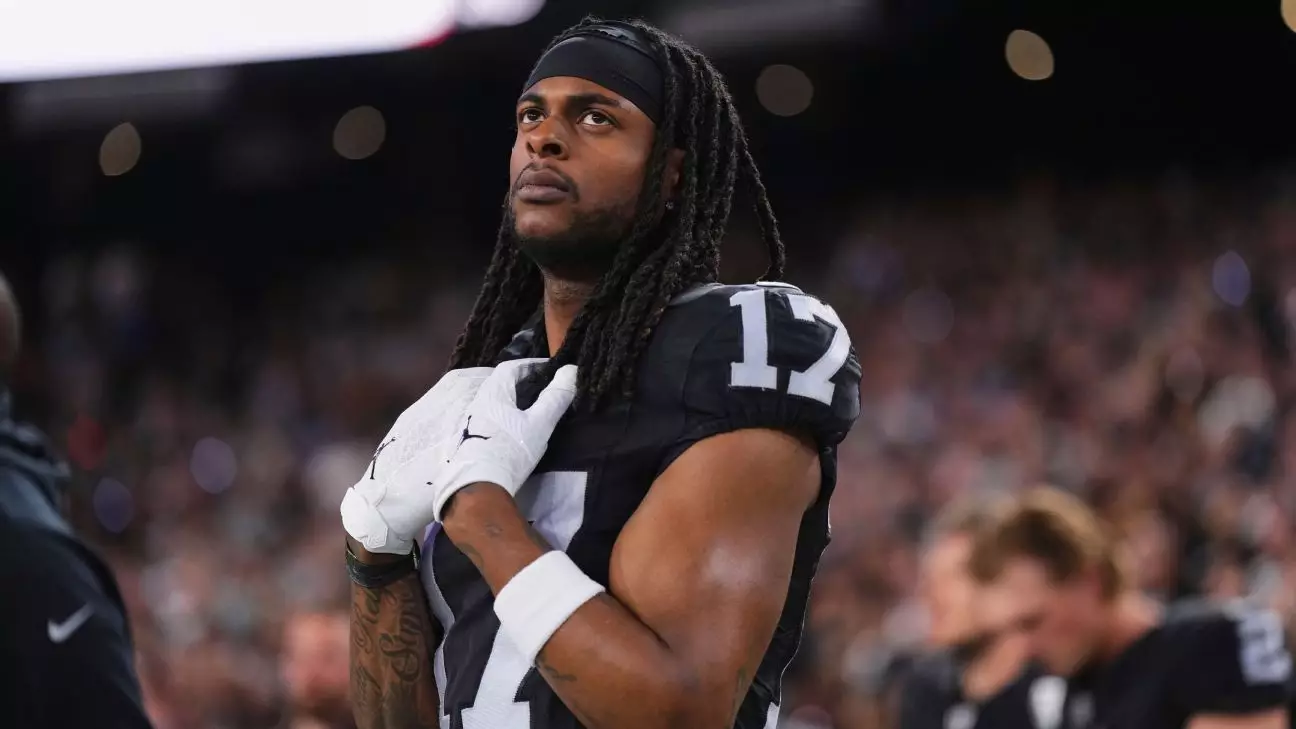The Las Vegas Raiders are facing a significant setback with the injury of their star wide receiver, Davante Adams. On Thursday, during a seemingly routine practice, Adams experienced discomfort in his hamstring, which has now set expectations for a week-to-week recovery process. This news reverberates throughout the Raiders’ organization, as the loss of a player like Adams—who has been instrumental in the team’s offense—significantly alters their offensive strategy. The team’s swift decision to rule him out for their upcoming game against the Cleveland Browns indicates the seriousness of the situation and suggests that the team may not have a clear timeline for his return.
Adams, through three games, has recorded 18 receptions, amassing 209 yards and a touchdown. This contribution is not easily replicated, and his absence leaves the team scrambling to redefine their offensive dynamics. Given the inherent risks associated with hamstring injuries, particularly for wide receivers whose success hinges on explosive speed and agility, the Raiders could be looking at a prolonged period without their key playmaker.
Compounding the challenges posed by Adams’ injury is the ongoing uncertainty surrounding the quarterback position. Despite discussions around a potential shift in the starter, the Raiders have opted to stick with veteran Gardner Minshew. Coach Antonio Pierce, in the wake of this decision, hinted at “business decisions” that would influence the team’s trajectory. While Minshew’s experience is valuable, his ability to lead the team without Adams will be put to the test. The young quarterback Aidan O’Connell—who has shown promise—remains a relevant option, with sources indicating he may take over if Minshew struggles.
The adjustment to losing Adams means that Minshew will need to rely heavily on other targets, such as Jakobi Meyers and rookie tight end Brock Bowers. Meyers, who had nearly assumed the secondary wide receiver role, will now be under pressure to fill the void of a top target. Bowers, having garnered significant attention as a first-round draft pick, leads NFL tight ends in catches so far, and his involvement is likely to increase with Adams sidelined.
Team morale and the collective mindset in the locker room could also be significantly impacted by Adams’ injury. Coach Pierce emphasized that no one on the team needs to be a replica of Adams—each player should focus on being the best version of themselves. This mentality may serve as a rallying point for the remaining players, encouraging them to step up in the face of adversity.
The Raiders are no strangers to adapting their game plan; Adams’ absence during the preseason—when he took time off for the birth of his child—demonstrated their ability to recalibrate. The real test will be whether the team can maintain cohesion and performance under pressure. Comments from players suggest a strong belief in the next-man-up philosophy, though the effectiveness of these adjustments remains to be seen on game day.
In a wider context, the injury to Adams might also spark trade speculation regarding his future with the team. Although previous reports indicated that the Raiders were not keen on trading him—even amid discussions last summer—the state of their season could lead to a reassessment if they falter without him. For now, the immediate focus will be on how the Raiders compete against the Browns without their top receiver.
Ultimately, as the team heads into a critical stretch of games, the fallout from Adams’ injury might define their season. With upcoming matchups requiring strategic ingenuity, the Raiders have the hard task of transformation amidst uncertainty, challenging them to redefine their identity not only in the way they play but in how they adapt to adversity. Each piece of their puzzle must come together proficiently if they hope to mitigate the loss of a player whose presence on the field is irreplaceable.


Leave a Reply